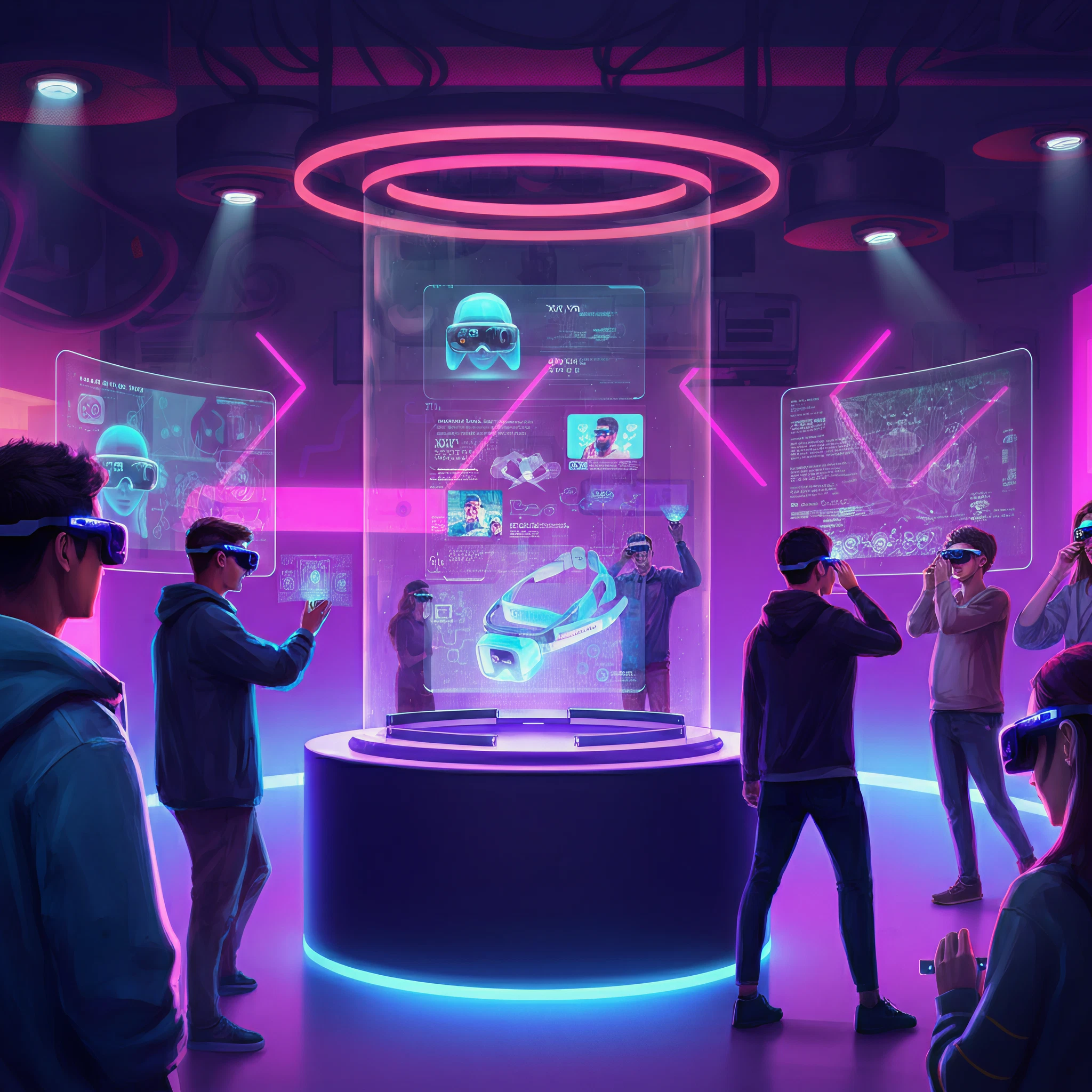Google has taken a bold step forward in augmented reality (AR) and extended reality (XR) technology. During TED2025, the tech giant showcased the first live demo of Android XR on a pair of prototype smart glasses, providing a glimpse into the future of spatial computing. This exciting development could reshape how we interact with technology and highlights Google’s commitment to advancing innovation in AR and VR.
A Closer Look at the Demo
The live demonstration, led by Google’s Shahram Izadi, presented various capabilities of the new Android XR platform. Here’s how Google’s prototype smart glasses performed during the showcase:
- Connected Ecosystem
The prototype glasses seamlessly integrate with your smartphone, giving users access to all their phone apps directly from their lenses.
- Context Awareness
During the demo, the glasses used Gemini Live AI to recall information with context. For example, Nishtha Bhatia asked Gemini what book was on the shelf behind her moments earlier. Gemini instantly provided the title, showcasing its ability to capture and recall spatial details from its surroundings.
- Multilingual Capabilities
The gestures and speech-recognition capabilities of the glasses were impressive. They translated signs into different languages, including Farsi and English, and enabled natural conversations with AI in Hindi, all without altering any settings.
- Immersive Utility
Gemini was shown providing nuanced, practical applications like:
-
-
- Recognizing objects (e.g., retrieving a hotel key card from a shelf).
- Explaining diagrams.
- Providing real-time navigation using 3D maps.
- Playing music by identifying a physical record.
-
This groundbreaking demo revealed just how far Android XR has come in blending the physical and digital worlds.
What is Android XR?
Android XR is Google’s dedicated platform for smart glasses and mixed-reality headsets. It builds upon years of AI and AR innovations to deliver immersive and interactive experiences. Through technologies like Gemini Live, Android XR offers powerful computing tools directly in wearable form, tailored for seamless real-world applications.
While Android XR supports immersive applications like navigation and object recognition, it also promotes accessibility and convenience. Whether enhancing productivity, offering gaming experiences, or facilitating communication, Android XR sets a high standard for AR devices.
Why This Demo Matters
This live demo wasn’t just a tech showcase; it was a vision of what’s possible with spatial computing. Google pointed to practical applications for the glasses in everyday life, bridging the gap between futuristic technology and solutions for common use cases.
Key Implications for Industry and Users:
- Work Productivity
From augmented presentations to instant reference materials, these glasses could redefine on-the-go work efficiency. With real-time notifications and task management tools visible on the lens, multitasking will become second nature.
- Education and Training
The ability to interact with diagrams and receive real-time translations opens up vast possibilities for learning and collaboration across industries.
- Entertainment and Gaming
Google teased its integration with immersive applications, including compatibility with Android XR headsets like Samsung’s Project Moohan, ideal for gaming and media consumption.
- Inclusive Features
Multilingual AI and object identification make the glasses accessible to individuals from diverse linguistic backgrounds and those with disabilities.
Why Developers Should Pay Attention
Perhaps the most exciting aspect of the demo was its potential for developers. Google’s unveiling signals huge opportunities within the Android XR ecosystem. Developers can now explore creating new applications for gaming, fitness, productivity, and more, thanks to Google’s robust machine-learning capabilities and user-friendly tools already integrated within Android XR.
With shared APIs and Gemini-powered interactions, the ecosystem will encourage innovation and collaboration.
Setting the Stage with Competitors
Google’s live Android XR demo establishes it as a front-runner in AR and XR development, setting itself apart by focusing not just on hardware but on powerful software integrations. Unlike articles that narrowly focus on specs, Google’s emphasis on real-world applications and developer potential reinforces the company’s leadership in innovation.
What’s Next for Android XR?
The prototype smart glasses are expected to be part of a future product launch in collaboration with Samsung. Rumors suggest a 2026 release, with details likely to emerge in the months ahead.
To stay ahead, Google’s focus remains clear:
- Enhance real-world utility for users.
- Support developers in building applications that blend seamlessly with daily life.
- Create wearable products that push boundaries in spatial computing.
Final Thoughts
Google’s first live demo of Android XR smart glasses brings us closer to the future of wearable technology. Beyond being a tech innovation, it represents a fundamental shift in how we’ll live, work, learn, and interact. The implications for developers, businesses, and end-users are staggering, and this is just the beginning.
Curious to learn more about Android XR and its potential uses? Make sure you explore Google’s official page to stay updated on this exciting tech revolution.








